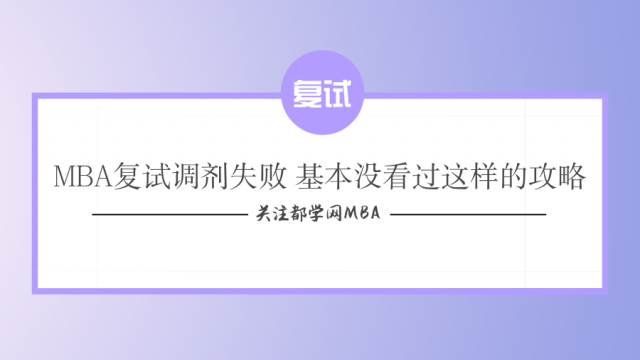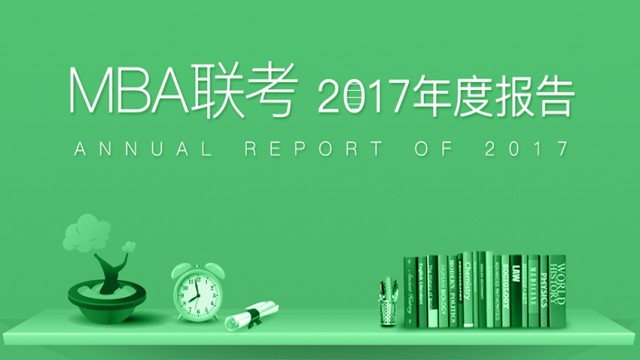MBA、MPAcc英语二同源阅读:The art market: Fairly popular
资料 | 2017年04月24日 15:57 | 文章来源:都学课堂
《经济学人》(The Economist)是一份创办于1843年的英国杂志,主要关注政治和商业方面的新闻。它是英语专业学生课外阅读的必备刊物,更是考研英语命题小组最钟爱的题源,历年考研真题中几乎有一半的文章都选自《经济学人》。
The rapid growth of art fairs is changing the way galleries operate. That won't fit in the living room.Shortly after The Economist went to press, about 25,000 people were expected to turn up at the London Art Fair. Your correspondent visited just before, as 128 white booths were being filled with modern paintings and sculptures. Dealers clutched mobile phones to their ears or gathered in small groups. They seemed nervous—as well they might be. “I can earn a year's living in one fair,” said one harried dealer while stringing up a set of lights.
译文: 艺术品集会的快速发展正在改变画廊的运转方式。那并不适合放客厅里。就在本期《经济学人》付印后不久,预计有两万五千人次参加伦敦艺术博览会。笔者之前参观过这个艺术博览会,现代画和现代风格的雕塑填满了128个白色展览位。商人们紧紧把手机贴在耳朵旁,或者三五成群。他们看上去神情紧张—也许事实也如此。一位忙碌的经销商一边忙着吊起组灯,一边说“一次博览会能让我挣足一年的生计”。
 Before 1999 London had just one regular contemporary art fair, remembers Will Ramsay, boss of the expanding Affordable Art Fair. This year around 20 will be held in Britain, mostly in the capital. Roughly 90 will take place worldwide. The success of larger events such as Frieze, which started in London, has stimulated the growth of smaller fairs specialising in craft work, ceramics and other things. Art14, which started last year, specialises in less well-known international galleries, showing art from Sub-Saharan Africa, South Korea and Hong Kong.
Before 1999 London had just one regular contemporary art fair, remembers Will Ramsay, boss of the expanding Affordable Art Fair. This year around 20 will be held in Britain, mostly in the capital. Roughly 90 will take place worldwide. The success of larger events such as Frieze, which started in London, has stimulated the growth of smaller fairs specialising in craft work, ceramics and other things. Art14, which started last year, specialises in less well-known international galleries, showing art from Sub-Saharan Africa, South Korea and Hong Kong.
译文: 逐步壮大的平价艺术品展览会老板拉姆齐,犹记得1999年之前,伦敦只有一个定期开展的当代艺术博览会。今年,英国将开展20余场,大都聚集在首都伦敦。粗略估计,全世界范围内会开展约90个艺术博览会。一些大型博览会,如开办于伦敦的斐列兹博览会刺激了小型专业于艺术品、陶艺品之类博览会的成长。去年开办的Art14博览会专注于一些不知名的画廊,专门展出一些来自黑非洲、韩国以及香港的艺术品。
One explanation for the boom is the overall growth of the modern-art market. Four-fifths of all art sold at auction worldwide last year was from the 20th or 21st century, according to Artprice, a database. In November an auction in New York of modern and contemporary art made $691m (£422m), easily breaking the previous record. As older art becomes harder to buy—much of it is locked up in museums—demand for recent works is rising.
译文: 艺术博览会的快速发展原因之一是全球当代艺术品市场的发展。据调研公司Artprice的数据,去年全球拍卖的艺术品中,有五分之四源于20世纪和21世纪。11月,纽约的一场现当代拍卖会创下了6亿9千1百万美元(约合4亿2千2百万欧元)交易额,轻松打破先前的记录。由于历史悠久些的艺术品变得难以购买(大部分都被锁在了博物馆里),所以对于近现代艺术品的需求有所上升。
London's art market in particular has been boosted by an influx of rich immigrants from Russia, China and the Middle East. “When I started 23 years ago I had not a single non-Western foreign buyer,” says Kenny Schachter, an art dealer. “It's a different world now.” And London's new rich buy art differently. They often spend little time in the capital and do not know it well. Traipsing around individual galleries is inconvenient, particularly as galleries have moved out of central London. The mall-like set-up of a fair is much more suitable.
译文: 伦敦的艺术品市场还尤其受来自俄罗斯、中国和中东移民浪潮推动。“23年前我刚开始入行的时候,我连一个非西方买主都没有”一名艺术品经销商沙克特说道:“世道变了”。而且伦敦的新富购买艺术品口味各异。他们很少花时间在成本上,对此了解也不多。漫步在个人画廊中很不便,尤其是当画廊都从伦敦市中心搬出去后。而商场式的集会设置就显得更为合适。
Commercial galleries used to rely on regular visits from rich Britons seeking to furnish their stately homes. Many were family friends. The new art buyers have no such loyalty. People now visit galleries mainly to go to events and to be seen, says Alan Cristea, a gallery owner on Cork street in Mayfair. Fairs, and the parties that spring up around them, are much better places to be spotted.
译文: 商业画廊过去一向依靠那些英国富人的定期造访,他们寻求艺术品来装饰他们富丽堂皇的家。还有一些还是亲友。那些新兴艺术品购买者没有这么忠诚。梅菲尔区科克街的画廊主克里斯蒂说,人们现在造访画廊主要是去参加活动。他们的周围充斥着各种集市还有聚会,都是更值得去的地方。
Some galleries are feeling squeezed. Bernard Jacobson runs a gallery opposite Mr Cristea. The changing art market reminds him of when his father, a chemist, was eclipsed by Boots, a pharmaceutical chain, in the 1960s. Seven galleries in Cork Street relocated this month to make way for a redevelopment; five more may follow later this year.
译文: 一些画廊感受到了相当的压力。雅各布森经营的画廊就在克里斯蒂的对面。艺术品市场的变化提醒他,他的化学家父亲因上世纪六十年代的制药锁链而失败。本月,科克街的七家画廊为了再发展决定迁址;还有五家在今年末也会跟随他们的脚步迁址。
Yet the rise of the fairs means galleries no longer require prime real estate, thinks Sarah Monk of the London Art Fair. With an international clientele, many can work online or from home. Although some art fairs still require their exhibitors to have a gallery space, increasingly these are small places outside central London or beyond the city altogether. One gallery owner says few rich customers ever visit his shop in south London. He makes all his contacts at the booths he sets up at fairs, which might be twice the size of his store. “It's a little like fishing,” he explains. “You move to where the pike is.”
译文: 伦敦艺术博览会的芒克认为,艺术品集市的兴起意味着画廊再不需要黄金地带。有了国际顾客,许多画廊可以网上交易或者居家办公。即使一些艺术品集市仍然要求参展商拥有展示空间,伦敦市中心外或伦敦之外不断的有小型地皮出现。一名画廊主说,他在在南部伦敦的店很少有有钱顾客光顾。他把所有联系都放在了他集会的展位上,因为展位可能是他店的两倍大。“这有一点像钓鱼”他解释道“鱼上哪,你上哪。”

2018MBA复试调剂失败的,基本没看过这样的攻略!
2018MBA复试调剂攻略!
MBA联考2017年度报告出炉,58万,你是选择奔驰还是读研
有人考MBA居然为了解决感情问题




MBA讨论内容:企业社会责任感
社会责任感的十大原则和八大类社会责任。
MBA知识:常见商业分析法
SWOT分析法和波特五力模型。




申请材料准备之组织结构图
组织结构图的分类和优缺点。

MBA联考英语历年出现10次以上单词汇总(收藏)
管理类联考超高频英语词汇
MBA逻辑四大基本题型公式速记,相当与一次学完半本书
突破逻辑30分魔咒



MPAcc英语备考困难户看过来,临考不玩套路【干货篇】
一次性解决MPAcc英语二完型、翻译、作文良配词组。



2018MBA管理类联考试卷题型分布+复习策略
一个来自都学网学员的真实反馈。




听说你网报后打算弃考?教你短期MBA考研复习绝地反击!
等明年考=永远不会再考了

我精选了近3年联考写作高分范文,送给对写作一脸懵逼的你
论说文真题与范文回顾
MPAcc考生发声:考后不做这些,白考!
模考参加完就完事了?最重要的是学试题解析!看讲评!




2018MBA/MPAcc管理类联考网报问题详解
建议使用流畅网络,仔细阅读报考公告规范报名
2018MBA/MPAcc管理类联考大纲原文(英语二篇)
关注教师权威解读考纲,为复习减压



问老师
手机看课
微信关注
我有意见






 100
100











